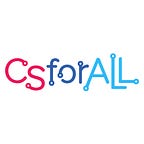Our STEM Role Models: The ENIAC Programmers
Claire and Chris Xu are high school juniors and recipients of the NCWIT Award for Aspirations in Computing.
As high school girls excited by the concepts of computer science and programming, our options for historic female role models seem limited. In history class, we learned about women’s empowerment regarding suffrage and equal job opportunity, but never in reference to careers in mathematics or computer science. There was never any mention of women who paved a pathway for others in STEM. However, learning about the all-female team of ENIAC “Computers” inspired us to strive to follow our passion for computer science and to reach for our goals, no matter the barriers or obstacles.
In 1943, the ENIAC project was created for the US Army during World War II. Unlike any other previous computer project, the first all-electronic, programmable computer was successfully programmed by six intelligent young women. Kathleen “Kay” McNulty Mauchly Antonelli, “Betty” Jean Jennings Bartik, Frances Elizabeth “Betty” Holberton, Marlyn Wescoff Meltzer, Frances Bilas Spence, and Ruth Lichterman Teitelbaum — all women in their twenties — were the initial programmers of the ENIAC, and when we first heard about them, we were stunned. They were quite remarkable considering the enormity of their pioneering work and competing gender standards in technology at the time. As young women who usually work with young men in all of our STEM classes and clubs, we related to these women almost instantly.
Currently, we are both taking the Java Accelerated course at our school, and we find that in our school these types of programming classes, whether they be in Python, Java, AP Computer Science, or Algorithms and Data Structures, are all normally 60–75% boys. Even the Computer and Robotics Club at our school has mostly male attendees. Our teacher Ms. Elia has one classroom and it is almost always filled with boys before school, during class, during lunch, or after school when people come in just to hang out. And it’s remarkable to us that even in 2018, our male peers still sometimes tell us that we shouldn’t take computer programming classes because they are too difficult for us as women. Because of this, the ENIAC programmers really allow us to feel included in the technological field, and make us want to still strive to work hard and code.
That’s why we joined the SiSTEM club. Now, as the two co-presidents, we help the club inspire girls in our school to want to learn computer science and sign up for the programming classes. With over 60 members, we are lucky to have formed this community of sisterhood, to be able to help each other out with code, or just to have fun and visit technology company headquarters. It has been a truly eye-opening experience and it was all partly due to the work of the ENIAC Team. Without them, we and many other women wouldn’t have taken the leap to begin to bridge the technology gender gap.
The pioneering work of the ENIACT programmers absolutely paved the way for legions of other computer programmers and engineers interested in the field. An expanded team of engineers and programmers continued the work on the ENIAC after the work of the initial programming team of six women (as well as a larger team of male engineers). Among this expanded team were many more intelligent and bright women. However, without the work of these original members, women would not have been fully recognized for their abilities in computer science and technology, and later generations would not have had the opportunity to work on such an amazing project that still impacts the world today. Although women still do not receive equal recognition in the field of computer science, the discovery of these female ENIAC programmers lends more credence to women within computer science and provides fantastic female tech role models for young women like us who are just starting to code.
The ENIAC programmers have inspired young women just like us, as young as high school or even middle school, to want to be an integral part of the technological field. As two young women eager to be a part of the ever-changing tech world, the ENIAC team created a sense of pride for women in STEM, and gave us the can-do motivation to want to fight for gender equality within this field. Their story sparked in us the desire to want to go into computer science, and the ability to see ourselves there.
To learn more, you can visit the ENIAC Programmers website. Watch the trailer for “The Computers: The Remarkable Story of the ENIAC Programmers” — Kathy Kleiman’s documentary about the ENIAC programmers featuring 1940s Movietone footage and never-before-seen interviews.
Claire Xu and her twin sister Chris Xu are both 2018 NCWIT Aspirations in Computing Regional Affiliate Winners for the New Jersey. They are juniors at Princeton High School, and co-presidents of the SiSTEM club, which works to inspire young women to pursue careers in STEM. Claire participated in Kode with Klossy last summer, an inspiring coding camp for girls. Both Chris and Claire love to code and are learning Java in school this year. They hope to continue progressing in computer science throughout high school and college.
